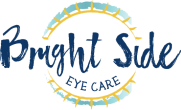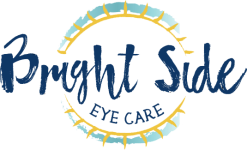How Blue Light Blocking Lenses Can Help You
- Home
- How Blue Light Blocking Lenses Can Help You

- Brightside eyecare
- No Comments
- Fiber Optics, Geometrical
How Blue Light Blocking Lenses Can Help You
The average american uses digital devices about 24 hours a week. Patients can experience several side effects to long term exposure to high energy blue light from digital devices. Excess exposure can lead to fatigue, dry, itchy eyes, light sensitivity, trouble sleeping, headaches and some studies have reported an increased risk for a debilitating eye disease, macular degeneration.
A March 2017 study, published in BioMed Central Ophthalmology, showed that there have been significant results in decreasing the symptoms mentioned above when using blue light blocking lenses while viewing digital devices. The study had its patients fitted with photochromic Transitions XTRActive lenses with Crizal Prevencia blue blocker anti-reflective coatings. Transitions XTRActive lenses have been proven to block 88-95% of blue light at the high energy blue wavelength of up to 430 nm when activated while Crizal Prevencia filters 20% of high energy blue wavelength light indoor and out. Patients preformed better during testing with the blue light filters and reported less symptoms associated with looking at digital devices.
Even though this study proved that there is greater patient satisfaction with blue light blocking lenses there is still a lot to be understood about the process of blue light and its dangers. Additional adjustments should be made for those that look at devices for prolonged periods of time. A easy remedied can be made by patients and its called the 20-20-20 rule. Any person that stares at a computer for 20 minutes should look at something 20 feet away for 20 seconds to relieve eye strain. Additionally, patients can use artificial tears to relieve dry, itchy eyes due to reduce blink rates while looking computer screens.


